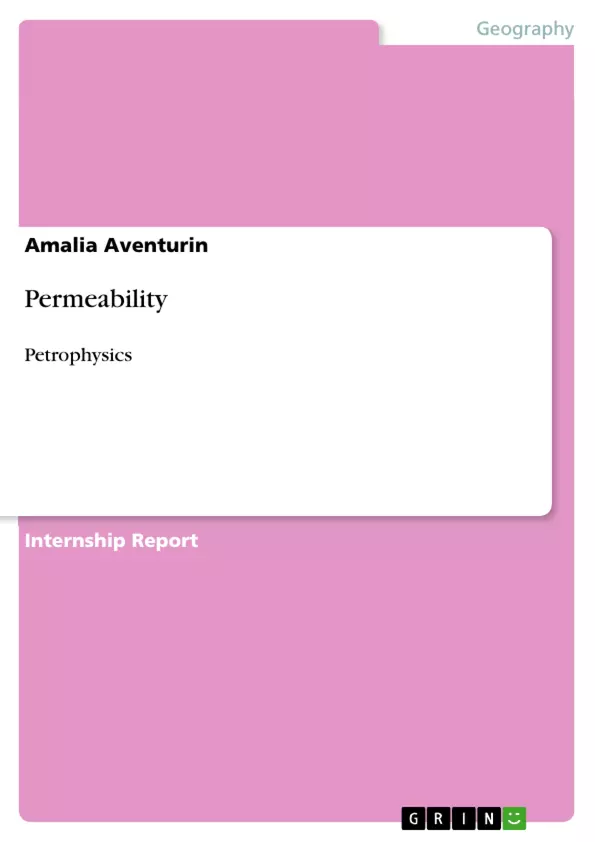Two different methods were applied to determine the permeability:
The absolute permeability (kabs, [m², Darcy]) of gas was determined by a singlephase
experiment with a sandstone as dry sample (LxBxH) shown in figure 1. With
this steady state method a constant confining pressure of 4 bar was induced. At the
upstream side a gas (air) pressure up to 1.5 bar was created.
The gas volume was measured at the downstream side with the soap bubbles: The
velocities of the rising
bubbles were
measured in the brine.
Out of this the “bubble”
volume the gas flow
can be determined. [...]
Inhaltsverzeichnis (Table of Contents)
- I. Introduction: Measurement Principle
- II. Darcy's law for compressible media
- III. Darcy's law for incompressible media
- IV. Error propagation and Standard Deviation
- V. Conclusion
- VI. References
Zielsetzung und Themenschwerpunkte (Objectives and Key Themes)
This laboratory course aims to determine the permeability of sandstone samples through experiments utilizing Darcy's law for both compressible and incompressible media. The course aims to provide practical experience in measuring and analyzing permeability data, while also introducing fundamental concepts and techniques in petrophysics.
- Permeability Measurement Techniques
- Application of Darcy's Law for Compressible and Incompressible Media
- Klinkenberg Correction for Gas Permeability
- Error Propagation and Standard Deviation in Permeability Measurements
- Practical Application of Petrophysics Concepts
Zusammenfassung der Kapitel (Chapter Summaries)
The first chapter introduces the measurement principle for determining permeability, focusing on the two methods employed in the course: single-phase experiments with dry sandstone samples for absolute permeability (Kabs) and a second apparatus measuring the effective permeability of water. The second chapter delves into Darcy's law for compressible media, outlining the calculation of absolute permeability using the measured gas volume over time, gas viscosity, and relative pressure. The third chapter examines Darcy's law for incompressible media, detailing the measurement of water permeability using a sealed sample surrounded by water and a water source with a known height. The fourth chapter explores error propagation and standard deviation in permeability measurements.
Schlüsselwörter (Keywords)
This laboratory course focuses on the concept of permeability, encompassing both absolute and effective permeability. It employs Darcy's law for compressible and incompressible media, incorporating the Klinkenberg correction for gas permeability. The course also emphasizes the importance of error propagation and standard deviation in analyzing permeability data. Practical applications of petrophysics concepts are highlighted throughout the course, making it a valuable resource for students and professionals in the field.
- Quote paper
- Amalia Aventurin (Author), 2013, Permeability, Munich, GRIN Verlag, https://www.grin.com/document/272604



